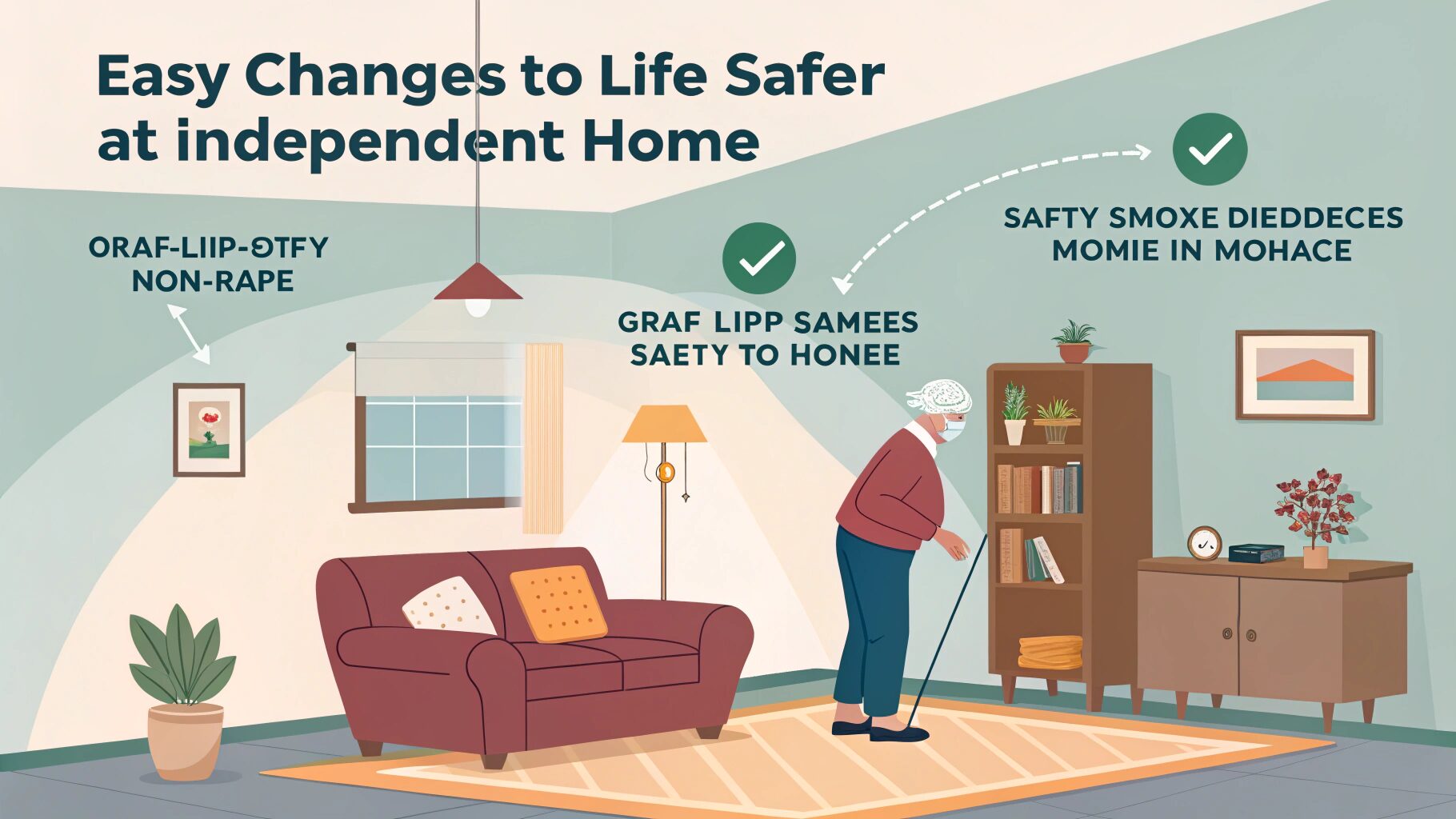Living independently is a top priority for many older adults. With a few simple changes, you can make your home a safer and more comfortable place to thrive. These small adjustments help reduce fall risks, support mobility, and make everyday tasks easier—so you can continue enjoying life on your terms.
Here are easy, effective ways to make your home safer and support independent living after 60:
1. Improve Lighting in Every Room
Poor lighting can increase the risk of trips and falls. Brighten dark hallways, staircases, and corners with energy-efficient LED bulbs and add night lights where needed.
Tip: Install motion-sensor lights in bathrooms and bedrooms for safer nighttime movement.
2. Remove Tripping Hazards
Loose rugs, clutter, and electrical cords can cause serious falls.
Tip: Secure rugs with non-slip pads, clear walkways, and keep floors free of shoes or small items.
3. Install Grab Bars and Handrails
Support bars offer added safety when moving through your home.
Tip: Place grab bars near toilets, showers, and stairways to reduce the risk of slipping or losing balance.
4. Use Non-Slip Mats and Flooring
Slippery surfaces are a common source of accidents.
Tip: Use non-slip mats in kitchens, bathrooms, and entryways. If possible, consider slip-resistant flooring.
5. Rearrange Frequently Used Items
Minimize the need for bending or reaching by keeping important items within easy reach.
Tip: Store daily-use items like dishes, clothing, and medications between waist and shoulder height.
6. Choose Easy-to-Use Appliances and Fixtures
Modern, accessible appliances can make tasks safer and easier.
Tip: Replace round knobs with lever-style handles, use large-button remotes, and consider appliances with automatic shut-off features.
7. Set Up a Safe Bathing Space
Bathrooms are high-risk areas due to water and hard surfaces.
Tip: Use a shower chair, a handheld shower head, and non-slip strips in tubs or showers for safer bathing.
8. Keep Emergency Contacts Visible
In an emergency, quick access to contact numbers is essential.
Tip: Post a list of emergency phone numbers near the phone, on the fridge, or in another easy-to-see place.
9. Use Assistive Devices as Needed
Supportive tools can increase both safety and confidence at home.
Tip: Use walkers, canes, or reachers when needed—they promote independence, not take it away.
10. Consider a Medical Alert System
Emergency alert systems provide extra peace of mind.
Tip: Choose a wearable device with fall detection and 24/7 emergency monitoring.
Final Thought
Staying independent doesn’t mean doing everything alone—it means creating a safe, supportive space where you can thrive. By making these small changes, you can enjoy your home with greater peace of mind and freedom.
For more tips on safe and smart aging, visit SeniorNova.com—your trusted source for senior wellness and lifestyle support.
